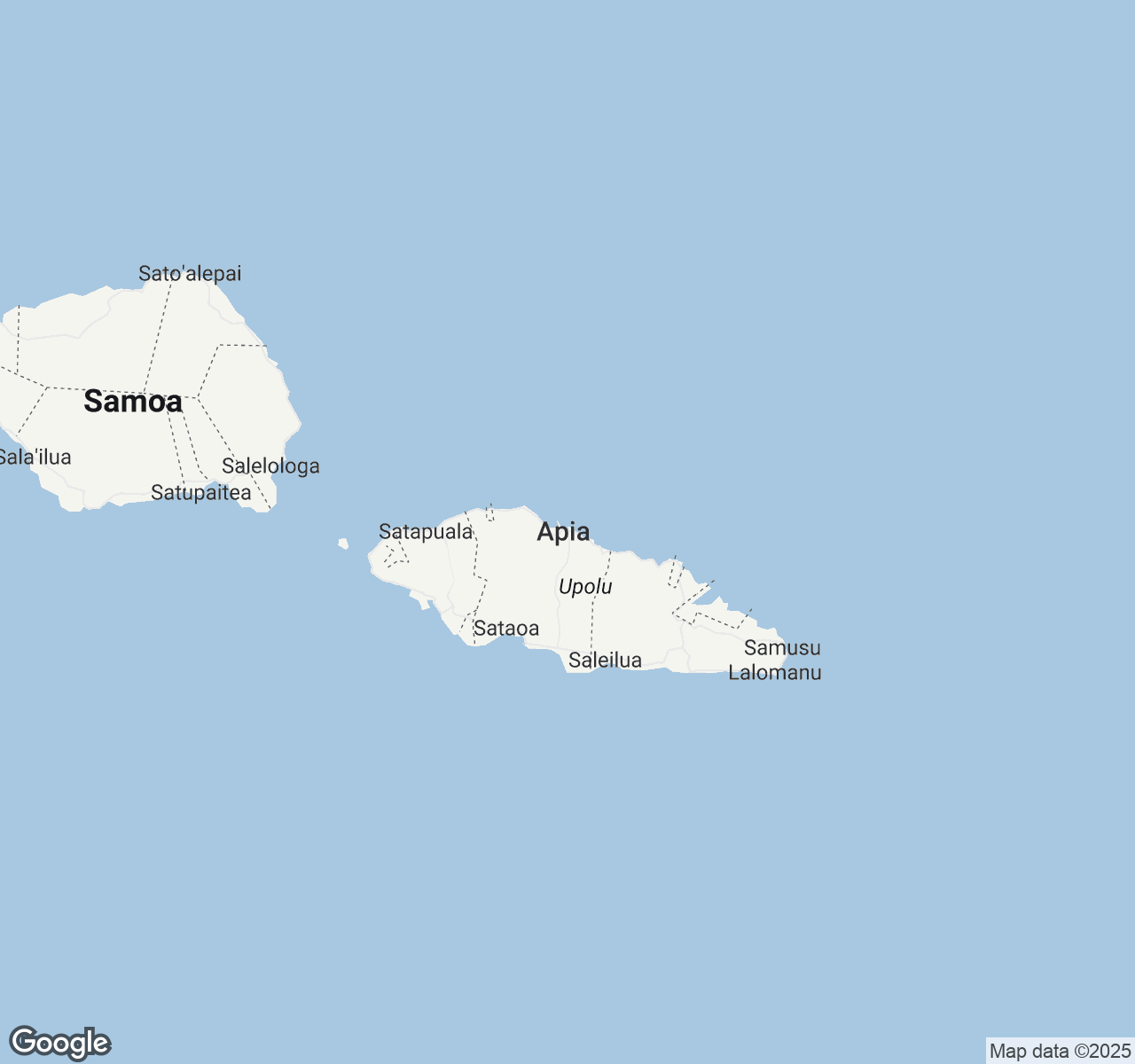
Things to Do in Apia
Discover the best of Apia
Plan Your Trip
Essential guides for timing and budgeting
Top Things to Do in Apia
Discover the best activities and experiences. Book now with our trusted partners and enjoy hassle-free adventures.
Your Guide to Apia
About Apia
Where the Pacific Ocean whispers ancient Polynesian secrets to a city that moves at the gentle pace of island time, Apia unfolds as Samoa's beating heart wrapped in tropical splendor. This enchanting capital dances between two worlds—honoring traditional fa'a Samoa culture while embracing the necessities of modern life. Colorful colonial buildings line bustling Fugalei Market, where the air thrums with melodic Samoan chatter and the sweet perfume of frangipani mingles with the aroma of fresh coconut. Here, Sunday silence is sacred, church bells create symphonies across the harbor, and families gather beneath swaying palms to share stories passed down through generations. The city's soul reveals itself in quiet moments: watching crimson sunsets paint Apia Harbor, feeling the warm embrace of genuinely welcoming locals, and discovering that in this corner of great destination, life's greatest treasures aren't found in guidebooks but in the authentic connections forged between strangers who quickly become friends.
Travel Tips
Transportation: Rent a car for maximum flexibility, but drive cautiously on narrow roads. Colorful buses operate between villages for $2-5 WST. Taxis are available but negotiate fares beforehand. Walking is pleasant in central Apia's compact downtown area.
Money: Bring cash as many local businesses don't accept cards. ANZ and BSP banks have ATMs dispensing Samoan Tala (WST). US dollars widely accepted. Tipping isn't customary in Samoan culture—generous hospitality is simply their way.
Cultural Respect: Sunday is sacred—most businesses close and beach activities are discouraged. Dress modestly when visiting villages, covering shoulders and knees. Remove shoes before entering homes. Always ask permission before photographing people or ceremonies.
Food Safety: Try local specialties like palusami and oka at Fugalei Market—vendors are reliable. Stick to bottled water outside resorts. Fresh tropical fruits are safe when peeled yourself. Avoid raw fish dishes if you have a sensitive stomach.
When to Visit
Apia enjoys a tropical climate year-round, with dry season (May-October) offering ideal conditions: temperatures of 24-28°C, minimal rainfall (100-150mm monthly), and refreshing trade winds. This peak season sees 30-40% higher accommodation rates but delivers perfect beach weather and excellent diving visibility. Wet season (November-April) brings higher humidity, temperatures of 26-30°C, and substantial rainfall (200-400mm monthly), but also lush landscapes and 25-35% lower prices. Cyclone risk exists December-March, though direct hits are rare. March-May offers the sweet spot: fewer crowds, moderate prices, and decreasing rainfall. Key festivals include Independence Day celebrations (June 1-3) featuring spectacular cultural performances, and Teuila Festival (September) showcasing traditional Samoan arts with lower accommodation availability. Budget travelers should target shoulder months (April-May, November) for 20-30% savings. Families prefer dry season's reliable weather, while culture enthusiasts should visit during festival periods. Surfers find optimal swells March-October, particularly at nearby breaks. Regardless of timing, Sunday's reverent stillness offers profound cultural immersion as the entire nation observes traditional day of rest.

Apia location map